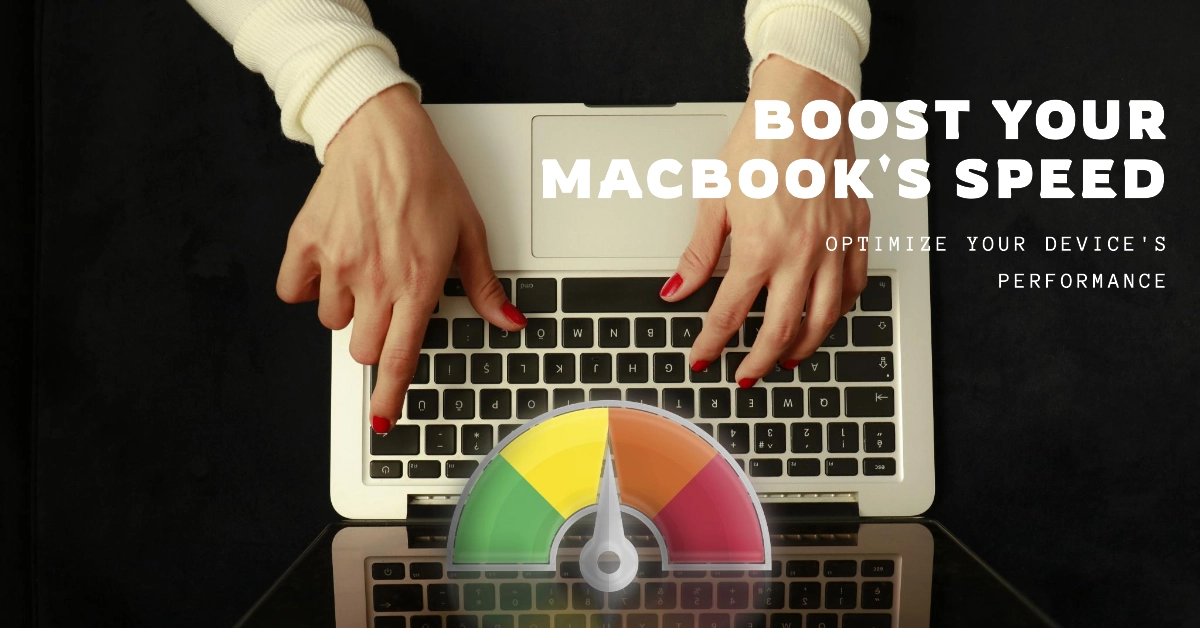The sleek design and efficient performance of MacBooks make them beloved by students, professionals, and power users alike. However, as time goes on, even your trusty MacBook might start feeling sluggish.
Sluggish performance can be caused by a variety of factors. Don’t despair if your MacBook has lost its initial zip – there are steps you can take to restore its speed.
This comprehensive troubleshooting guide will provide you with actionable steps to optimize your Mac and revitalize its performance.
1. Check Your Available Storage Space
Your MacBook needs sufficient storage space to operate smoothly. A nearly full hard drive can create a bottleneck when your computer needs to process information.
macOS requires breathing room in the form of free space for temporary files, virtual memory, and smooth overall operation.
Here’s how to Check Storage:
- Click on the Apple logo in the top left corner of your screen.
- Select “About This Mac.”
- Navigate to the “Storage” tab. Here, you’ll see a visual breakdown of your hard drive’s used and available space.
Freeing Up Storage Space
- Delete Unused Apps: If you have been using your MacBook for a while, chances are you have accumulated applications you no longer use. Identify and uninstall those apps to free up storage.
- Clean Your Downloads Folder: Downloads can build up, so check it and get rid of anything you don’t need.
- Remove Large and Old Files: Manually search for large or unused files you can delete. Check folders like Movies, Music, and Documents.
- Empty the Trash Bin: Items put in the Trash aren’t permanently deleted until you empty it.
- Utilize Cloud Storage: Services like iCloud, Google Drive, or Dropbox can offload data from your drive to the cloud and free up precious disk space.
2. Close Unnecessary Applications & Background Processes
While we think multitasking is efficient, having an excessive number of apps running simultaneously puts a strain on your MacBook’s processor and RAM (Random Access Memory).
Background processes, even from seemingly closed apps, can continue consuming resources.
Identifying and Closing Resource-Hungry Apps
- Open “Activity Monitor”: It’s found in Applications > Utilities.
- Click on the “CPU” tab to view apps in order of their CPU usage. Look for processes causing the highest strain.
- To quit a process, select it and click the “X” button in the top left.
Preventing Apps from Launching at Startup
- Go to System Preferences (previously called System Settings) > Users & Groups.
- Select your user account, then click the “Login Items” tab.
- Review the list of apps currently set to open at startup and deselect any that aren’t essential.
3. Update macOS and Apps
Apple and third-party software developers frequently release updates that contain performance improvements, security patches, and bug fixes.
Ensure your MacBook is running the latest version of macOS and that all of your important apps are also up-to-date.
Updating macOS
- Go to System Preferences > Software Update.
- If an update is available, click “Update Now” or “Upgrade Now” to download and install it.
Updating Apps
- Open the App Store on your MacBook.
- Click on the “Updates” tab in the sidebar.
- Install any available updates for your apps.
4. Manage Browser Tabs and Extensions
Modern web browsers tend to be resource-intensive. When you leave a large number of tabs open, they collectively draw RAM and processing power.
This can drag down your MacBook’s performance.
Smart Tab Management
- Be selective and close tabs you are not actively using.
- Consider bookmarking pages you want to return to instead of keeping them open.
- Use tab-saving extensions like OneTab if you tend to have numerous open tabs.
If none of these work, you may have to consider opting for hardware solutions. This is usually needed if the problem is attributed to some faulty hardware components.
FAQs
#1: My MacBook is still slow even after trying these tips. What else can I do?
- Answer: If you’ve exhausted the basic steps, additional steps that might help include:
- Resetting SMC and PRAM/NVRAM: SMC controls power management, and PRAM/NVRAM handles various settings. Resetting these systems can resolve underlying issues impacting performance. Search “[Your MacBook model] Reset SMC and PRAM” for specific instructions.
- Run Disk Utility: Disk Utility allows you to repair potential errors on your drive that might be impacting performance.
#2: Are there any third-party tools that can help optimize my MacBook’s performance?
- Answer: Yes, third-party optimization tools exist. However, it’s recommended to proceed with caution. Research reputable apps like:
- CleanMyMac X: Cleans up junk files, frees up space, and offers several optimization tools.
- Onyx: A multifunction tool for maintenance, cleaning, and configuration tweaking.
- CCleaner: A popular optimizer offering cleaning and tune-up functionality.
#3: How much free storage space should I aim to have on my MacBook?
- Answer: While there’s no hard and fast rule, it’s generally a good idea to keep at least 15-20% of your drive’s total capacity free. This gives macOS sufficient working space and avoids performance bottlenecks.
#4: Can having too many desktop icons slow down my MacBook?
- Answer: While it’s a common belief, having cluttered desktop icons shouldn’t directly impact your MacBook’s performance. However, it can hinder productivity, and a messy desktop might reflect a generally unorganized system. Maintaining a clean, organized desktop is just good digital hygiene.
#5: Could a failing hard drive be the reason for my MacBook’s slowness?
- Answer: Yes, a failing or aging hard drive (especially traditional HDDs) can significantly slow down your MacBook. Monitor your drive’s health with apps like “SMART Utility” for signs of degradation. If your drive is failing, a hardware upgrade like an SSD will not only address the slowness but dramatically improve the overall snappiness of your machine.

